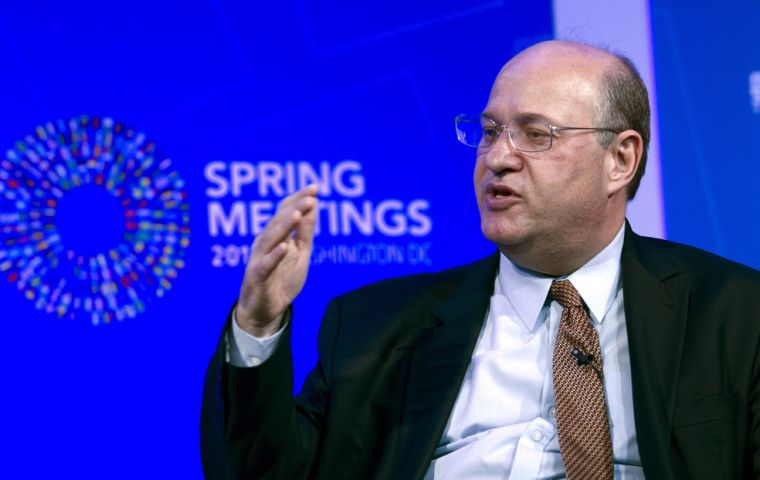MercoPress. South Atlantic News Agency
IMF experts foresee economic slowdown in the region for 2023
 Inflation remains the main problem, Goldfajn explained
Inflation remains the main problem, Goldfajn explained Growth projections in the region next year have been trimmed downwards due to inflation and skyrocketing interest rates, the International Monetary Fund (IMF) announced Thursday.
The global agency also announced that the economy in Latin America and the Caribbean showed a 3.5% progress in 2022 thanks to good performance in the services and employment sectors, as well as high commodity prices, strong external demand, remittances, and a recovery in tourism, Santiago Acosta Ormaechea, Gustavo Adler, Ilan Goldfajn and Anna Ivanova of the IMF's Americas Department explained in a blog posting Thursday.
While still dealing with the effects of the pandemic and the Russian invasion of Ukraine, Latin American countries are facing a tightening of global financial conditions, which has already begun, it was reported.
“With shifting headwinds ahead, growth next year is poised to decelerate more rapidly than we projected in July,” to 1.7% (-0.3 percentage points), they noted.
Brazil will grow 2.8% in 2022, Mexico 2.1%, Chile 2%, Colombia 7.6%, and Peru 2.7%. For Central America, Panama, and the Dominican Republic, the forecast is 4.7%, and for the tourism-dependent Caribbean countries, 5.2%.
Commodity exporters, such as South American countries, Mexico, and some Caribbean economies, are likely to “see their growth rates halved next year” because the fall in commodity prices “amplifies the impact of rising interest rates,” warned the experts.
Central America, Panama and the Dominican Republic will also lose steam “as trade with the United States and remittances weaken,” even though they will benefit from lower prices for the commodities of which they are buyers.
The Caribbean countries “will continue to recover, albeit more slowly than expected in July” because the outlook for tourism, on which they depend, is declining.
“Coming out of the pandemic, countries have been able to recover well” and “for the region, it has been a year of higher growth than we expected,” Goldfajn told AFP. ”The recovery has continued. I would say this is good news. The problem is to know if this good momentum continues in the future and (...) we think it does not continue“, due to the rise in interest rates to combat inflation, and the fall in growth in the United States and China, he added.
The main problem, according to the IMF's chief economist for Latin America, is inflation. Prices will continue to soar with inflation averaging 14.6% in 2022 and 9.5% next year, the IMF analysts predicted.
The swift response of the region's central banks, which raised interest rates ahead of advanced economies and other emerging markets, ”will help reduce inflation, but this will take time,” the blog notes.
In Brazil, Chile, Colombia, Mexico, and Peru, prices have affected items in the consumer basket beyond food and energy, and inflation hit a two-decade high of 10%, prompting the IMF to raise forecasts in this area. Price increases for these five countries will reach around 7.8% by the end of the year and remain at around 4.9% by the end of 2023.
Higher global interest rates and uncertainty result in further volatility and investor risk aversion and the subsequent slowdown may also affect exports and tourism.




Top Comments
Disclaimer & comment rulesCommenting for this story is now closed.
If you have a Facebook account, become a fan and comment on our Facebook Page!